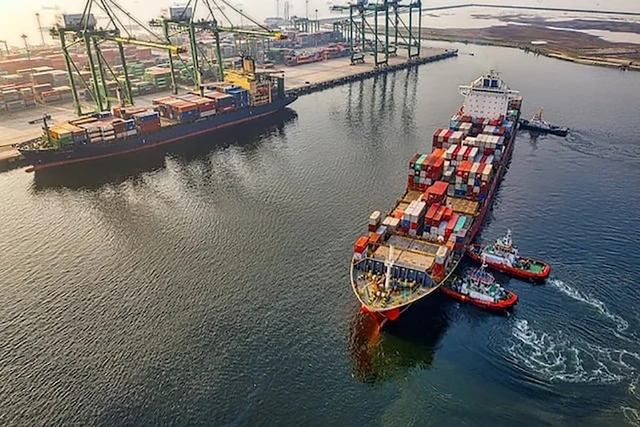Infrastructure
Centre Planning Huge Investments To Develop Industrial Waterway Corridor In The East
- This initiative, backed by Coal India, Paradip Port Authority, and the Inland Waterways Authority of India (IWAI) — aims to serve a major industrial cluster in India.
- The planned corridor aims to link two ports in Odisha's eastern region through the Brahmi River.
- The corridor project will ease congestion and pressure on the current rail and road infrastructure in a region that houses multiple mines, steel plants, and fertilizer plants.

By 2030, the project has the potential to transport 12 to 15 million tonnes of cargo (Source: william william/Unsplash)
Driving the objective of maximising the use of inland waterways for cargo transportation, the government agencies are considering investing up to Rs 120 billion ($1.46 billion) to create an industrial water transport corridor in the eastern region of the country.
This initiative, backed by Coal India, Paradip Port Authority, and the Inland Waterways Authority of India (IWAI) — aims to serve a major industrial cluster in India.
The planned corridor aims to link two ports in Odisha's eastern region through the Brahmi River.
By 2030, it has the potential to transport 12 to 15 million tonne of cargo, reports Reuters.
Objectives of the Industrial Water Corridor
The main objective of the corridor would be to transport various finished products, including steel, aluminium, sponge iron, and fertilizers.
The corridor project will ease congestion and alleviate pressure on the current rail and road infrastructure in a region that houses multiple mines, steel plants, and fertilizer plants.
The proposed corridor will serve as a connection for four major industrial clusters in Odisha.
These clusters are home to prominent companies in the power, electricity, and fertilizer sectors — such as Jindal Steel and Power, Adani Enterprises, Tata Steel, ArcelorMittal, National Aluminium Co, NTPC, and Indian Farmers Fertiliser Cooperative.
Over the last few years, the Indian government has prioritised multi-modal transportation with initiatives like the Gati Shakti National Master Plan (NMP) and the National Logistics Policy (NLP).
As part of this, there has been a significant emphasis on the development and utilisation of inland waterways for transporting large quantities of goods, including coal, in India.
Coal Transportation Through Waterways
Based on data provided by the MoPSW, there has been a compounded annual growth of 16.71 per cent in the transportation of coal via inland waterways since 2019.
The volume increased from 18.96 million tonnes in FY19 to 30.61 million tonnes in FY22. This growth indicates the growing acceptance and effectiveness of utilising inland waterways for coal transportation.
The MoPSW has set a target to transport 41.06 million tonne of coal through inland waterways in the current period, representing a 17 per cent increase.
Transporting goods through waterways costs around two-thirds of cost associated through railways and only half of what it would cost through road transportation.
The proposed corridor would also enable the smooth transportation of coal to power stations in the southern and western states of India — which have experienced power cuts due to coal shortages caused by the unavailability of railway rakes.
Currently, the transportation of coal to power stations is primarily managed by the state-owned Indian Railways.
According to reports, once the waterway becomes operational, both public and private companies will be invited to offer terminal and cargo services. A detailed project report is expected to be finalised within the next four to five months.
Support Swarajya's 50 Ground Reports Project & Sponsor A Story
Every general election Swarajya does a 50 ground reports project.
Aimed only at serious readers and those who appreciate the nuances of political undercurrents, the project provides a sense of India's electoral landscape. As you know, these reports are produced after considerable investment of travel, time and effort on the ground.
This time too we've kicked off the project in style and have covered over 30 constituencies already. If you're someone who appreciates such work and have enjoyed our coverage please consider sponsoring a ground report for just Rs 2999 to Rs 19,999 - it goes a long way in helping us produce more quality reportage.
You can also back this project by becoming a subscriber for as little as Rs 999 - so do click on this links and choose a plan that suits you and back us.
Click below to contribute.
Latest